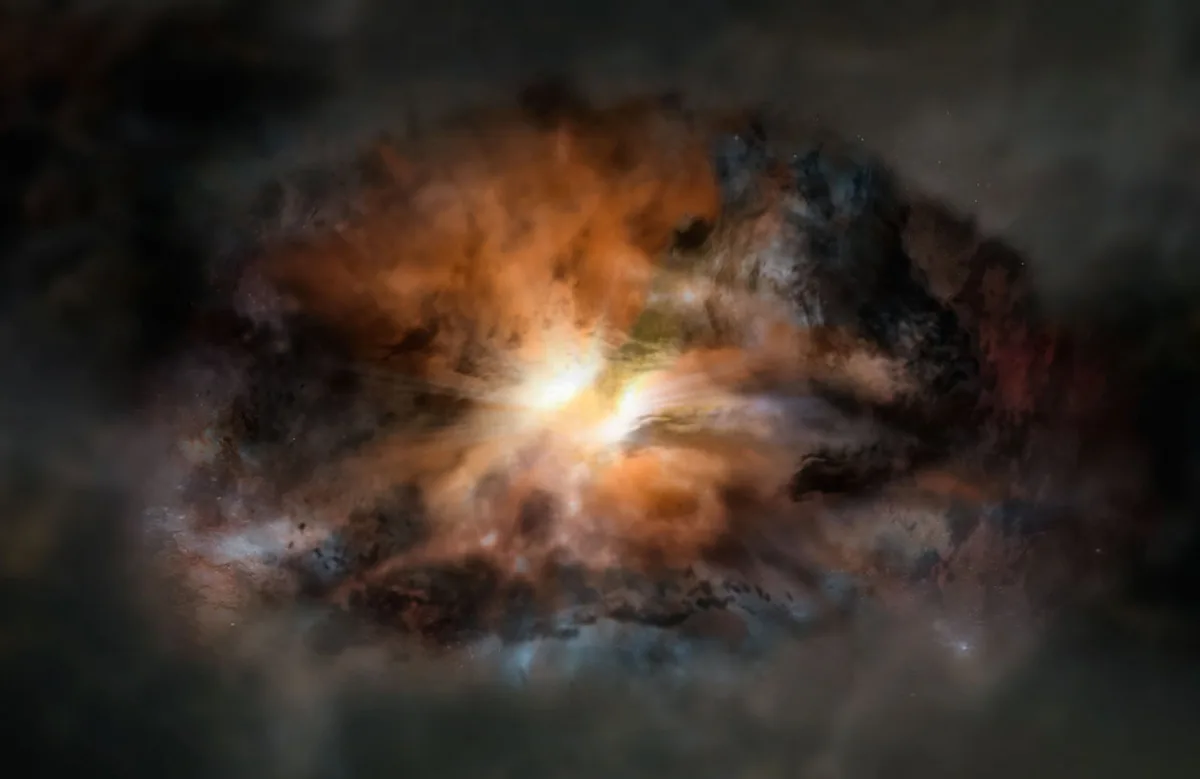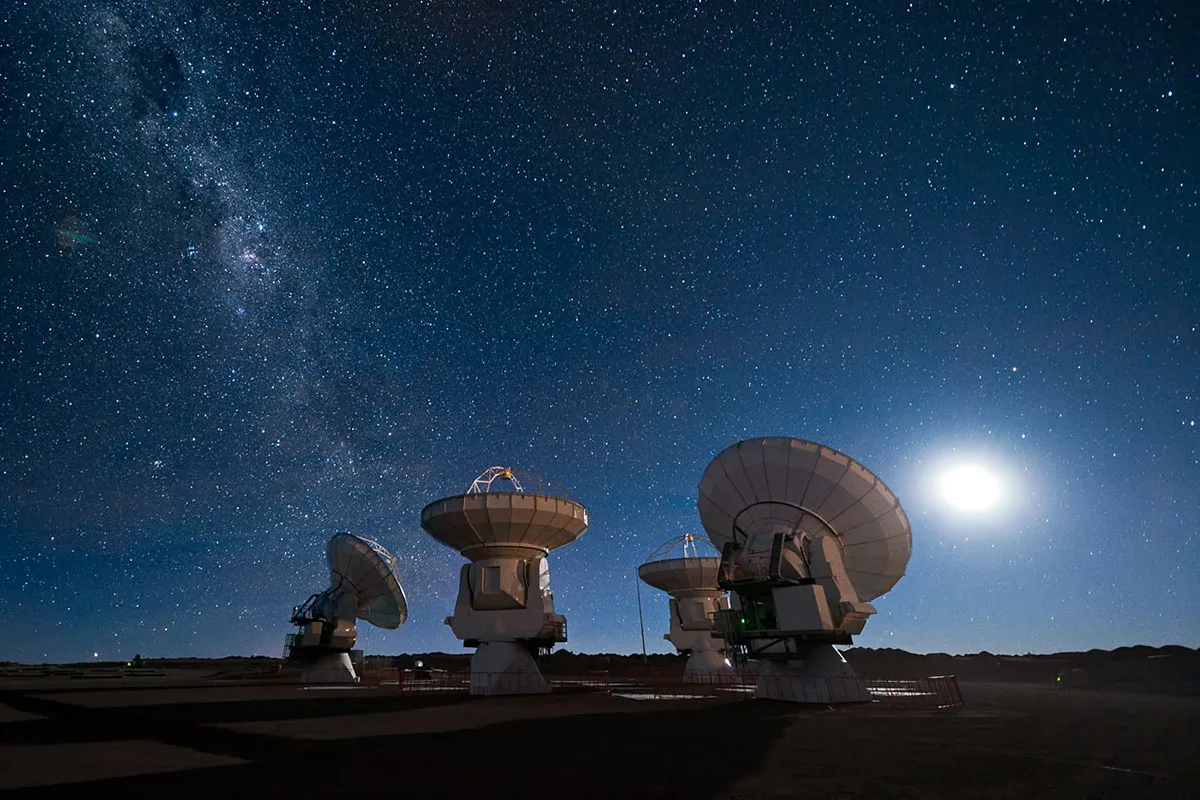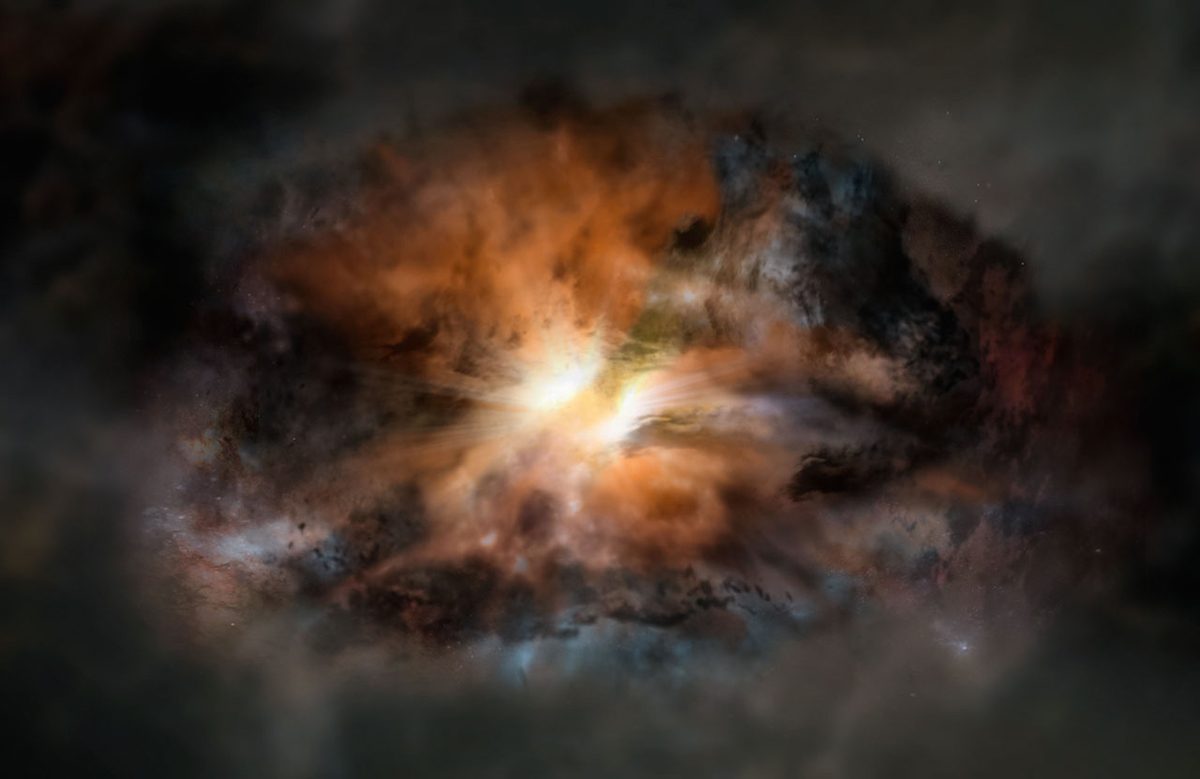Astronomers have become rather notorious for creating tortured names, whether they’re mistreating acronyms for telescopes (SPECULOOS is apparently the Search for habitable Planets EClipsing ULtra-cOOl Stars).
Or finding whimsical monikers for types of objects (green peas, blueberries, beans and chillies are all types of galaxy).
Such names are fun, but occasionally they’re useful: an eccentric name can help draw attention to objects that can often otherwise be overlooked.
In that spirit, there’s an interesting research paper that peers at a Hot DOG – a Hot, Dust-Obscured Galaxy – one of several identified a decade or so ago in data from the WISE telescope.

WISE was a NASA infrared space telescope that operated from 2009 until 2024.
The object in question, with the distinctly unmemorable name of W2246-0526, was the most luminous in the whole survey.
It was easily detected by WISE, even though its redshift of z=4.6 means that we see it as it was when the Universe was a tenth of its present age.
Its brightness seems to be due to a disc of material falling towards the galaxy’s central black hole.
However, in a Hot DOG, what we’d normally see as a quasar in visible light is hidden under a thick blanket of dust.
This dust heats up and shines like a glowing poker fresh from the fire in the infrared.
Snapshot of history
The impact of the rapidly accreting black hole is seen throughout the galaxy which hosts it.
Previous observations have spotted material expelled from the centre at speeds in excess of 10,000km/second and signs of shocks are seen throughout the galaxy.
As such turbulent conditions might be common in the early Universe, the brightness of W2246-0526 offers observers a rare chance to study what galaxies back then looked like.
The paper presents data from ALMA – an array of telescopes sensitive to sub-millimetre radiation, located high in the Atacama desert of northern Chile – to study the gas in the system.
In particular, they looked at common carbon monoxide. ALMA’s world-beating capabilities and the unique properties of the source mean that the spectrum reveals highly excited gas.
Even just a quick look at the data, which shows the most excited carbon monoxide spectrum seen anywhere, confirms that this is an unusual system.

What lurks in the Hot DOG?
Modelling suggests that this particular Hot DOG is stuffed full of gas.
Only models that have a high density of gas at a high temperature can explain the observations.
The total molecular gas mass seems to be about 100 billion solar masses – a surprising amount so early in the history of the cosmos.
In fact, the proportion of gas in the form of carbon monoxide is comparable to what we see in the Milky Way today, a sign that this system has grown rapidly despite its early age.
Results such as these illustrate how odd these (presumably short-lived) phases of a galaxy’s life with a rapidly growing obscured black hole must be.
Further observations from future telescopes will let astronomers peer closer in and see what’s happening much nearer to the black hole.
When they do, they might echo the title of this paper: hot diggity dog!
Chris Lintott was reading Hot Diggity Dog: A Complete Analysis of the Extreme Molecular Gas and Dust Properties at kpc scales in the Hyper-luminous Hot, Dust-obscured Galaxy W2246-0526 by Kevin C Harrington et al. Read it online at: arxiv.org/abs/2504.17639.
This article appeared in the July 2025 issue of BBC Sky at Night Magazine
